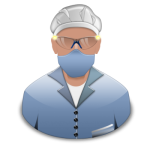Constant movement is healthy, but continuous, repetitive use can eventually cause injuries. San Diego Sports Physical Therapy shares this article about injuries from overuse and how to overcome them.
By Matt Connor, PT, DPT
What is an overuse injury?
An overuse injury is damaged tissue, such as bones, joints, and tendons that result from repetitive loading and demand over a course of time. Common examples include lateral and medial epicondylitis (tennis and Little League elbow), rotator cuff tendinitis and impingement, infrapatellar tendinitis (jumper’s knee), and achilles tendinitis. They are considered to be chronic injuries, appropriately affecting adults after years of sports and activity. Recently, however, overuse injury has been affecting children as young as 8 years old.
Why do overuse injuries occur?
Bones, tendons, muscles, and ligaments have the ability to get stronger with physical stress. This process is called remodeling. Remodeling involves the breakdown of tissue followed by the build-up. Simply put, if breakdown occurs more rapidly that build-up, injury occurs.
Training errors are the most common cause of overuse injury. These errors involve intensity, duration, and/or frequency of training. Going too fast, exercising for too long, or simply doing too much of one sport can strain your body and lead to an overuse injury.
There are also technical, biomechanical, and individual factors. Proper form is critical in avoiding injury, for example throwing a baseball. For this reason, coaches can play a big role in injury prevention. Imbalances in strength and flexibility can also predispose an individual to injury and can be addressed by physical therapy or sports conditioning programs.
Can overuse injuries be prevented?
Injury can never be fully prevented or eliminated. However, we can reduce the likelihood of injury. First, listen to your body. Pain is the body’s way of telling you to rest. The phrase “no pain, no gain” does not apply.
Second, mix up your routine. Instead of focusing on one type of exercise or sport, consider two or more types, known as cross-training. Different sports use different muscles, and variation is healthy, especially for a young athlete.
Some final guidelines include:
– Warm-up before and cool-down after activity.
– Pace yourself.
– Use proper form and gear.
– Have fun!






Speak Your Mind